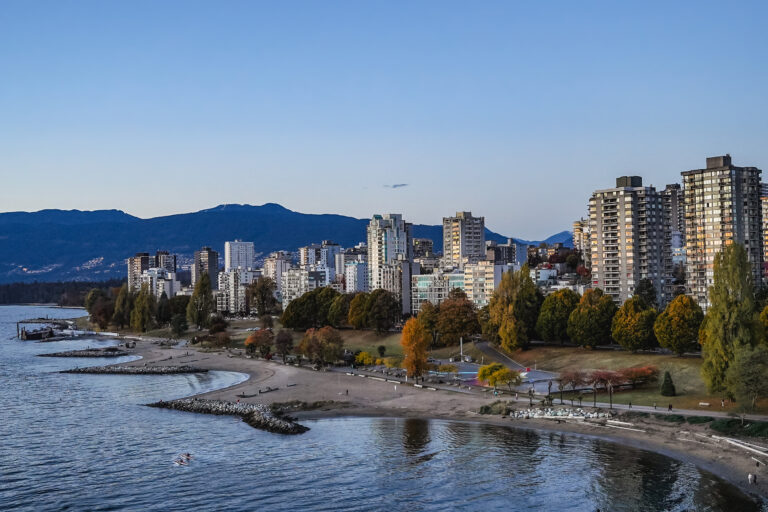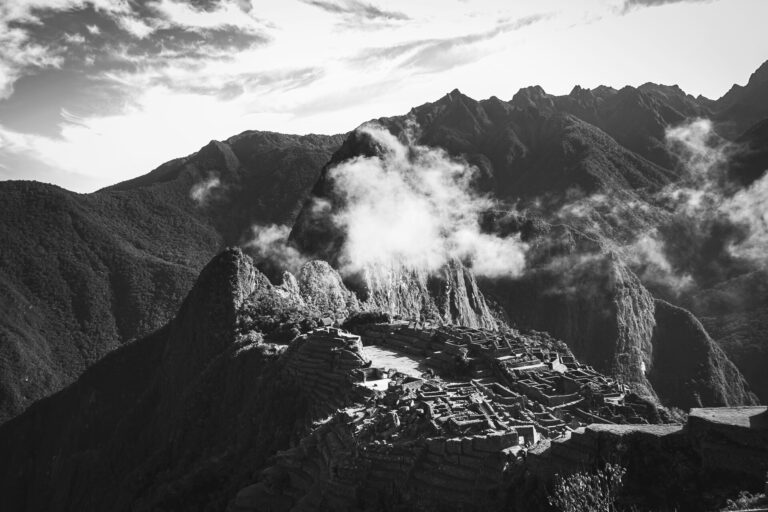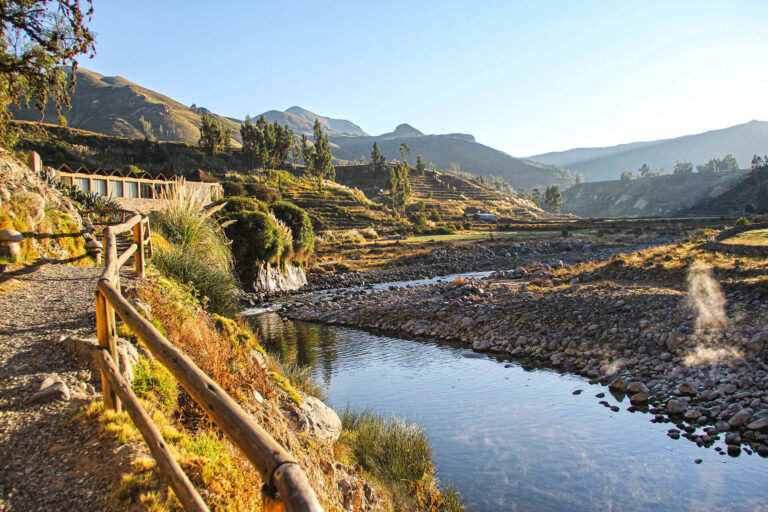It’s late hot morning and we have just landed at the airport of Iquitos, the capital city of the Peruvian Amazon. There are no foreign tourists getting off the plane with us, it’s January 2021 and Peru has just been hit by the second wave of the global pandemic. The air has rapidly changed from dry and cold to very humid and hot jungle air.
As soon as we step out of the airport the taxi drivers gather around us like hungry vultures. They barely let us pass through a door and we have to break through their crowd to escape from them. As we keep walking they are tirelessly following us at the parking lot and offering to drive us to the city for around 30 soles. They are trying to convince us they have to pay for the expensive parking at the airport. After they gave up we approached a quiet driver offering us half a price. We are hopping on the motocarro and heading straight to our hostel. While the driver is taking us to our place, we are chatting with him and getting a recommendation for a local tourist agency.
The city of Iquitos has around 400,000 inhabitants and it’s the world’s largest city not accessible by road. The main square is quite huge and on one side of it still stands a Christmas tree. Right in front of it is a tour agency with a big sign “Amazon Camp”. We are heading to its stairs and entering an old colonial building. One of the guides begins to explain to us the program of all the tours one by one and shows tempting pictures of every activity the tours promise.
On a corner of every picture is a noticeable graphic saying their camp has been visited by stars like Arnold Schwarzenegger or Jennifer Lopez. On our question, if the movie Anaconda was shot in their camp, the guy is answering that the production just stayed some days in there to get inspiration, but everything was done in Hollywood. The agency is providing a discount on their tours and we are buying a 3-day tour.

The day of our departure has come and we are in the agency right on time. There is a family with a small kid and a big group of teenagers. All speaking Spanish. After half an hour we are getting the basic instructions and walking toward an old bus from the early 20 century. The bus drives us to a port and we are hopping on a small boat. Our guide introduces himself in Spanish, tells us the basic info and later on, we are totally sure he won’t speak English as they told us at the agency.
The first stop should have been a noticeable border between the two rivers, the red dirty Amazon and darker Nanay, but we are passing it by without noticing, busy looking for the dolphins. Unfortunately, they seem to be far away and we end up taking pictures sitting on the bow of our boat with beautiful Amazonian nature.
Our guide warns us we should go just two by two and always try to keep about the same number of people on both sides because of the balance. There is a middle-aged Peruvian woman with us saying she fell asleep and missed the sunrise a previous group did, so she and her daughter are going to do this activity with us. Eventually, she didn’t do it even with us.
As the boat is passing by the wild shores occupied by small communities and early morning fishermen, we are approaching a huge construction of a bridge. The bridge is going to connect the city of Iquitos to facilitate the supply of more distant communities in the jungle.


Finally, we are approaching our first stop, Serpentario “Javier” Rescue Centre. It’s a wooden construction right next to a narrow river Momon standing on the stilts as protection against a high level of water during rainy seasons. Excited to see wild animals for the first time in a jungle, we are following our guide to a bar at the entrance.
There is no one to welcome us, just girls working at the bar with some drinks and our guide hanging around seeking some relaxation. Suddenly, an older man appears and calls us to go with him. With a lack of information, our group is finally heading to see the first animal, the sloth.
We are standing in front of a cage around 3×3 meters big, with one tree in the middle, and five sloths. The man is opening a cage, grabbing the first sloth he spots, and asking who wants to be the first to take a picture with the animal. There are about ten people gathered around prepared with their phones and cameras. The sloth, that the man has been holding, is suddenly petrified and with him, we are as well. The scared animal is moving just with the head, remaining in the same position.
There are a lot of people standing around him and waiting to take plenty of pictures. The place is really tiny and without prior notice, almost no one is wearing a mask. The guide is holding the sloth again, asking who wants to be next and pointing at us. We are denying and rather entering into the cage with other sloths. There is no one in the cage so we can walk around and take some pictures.
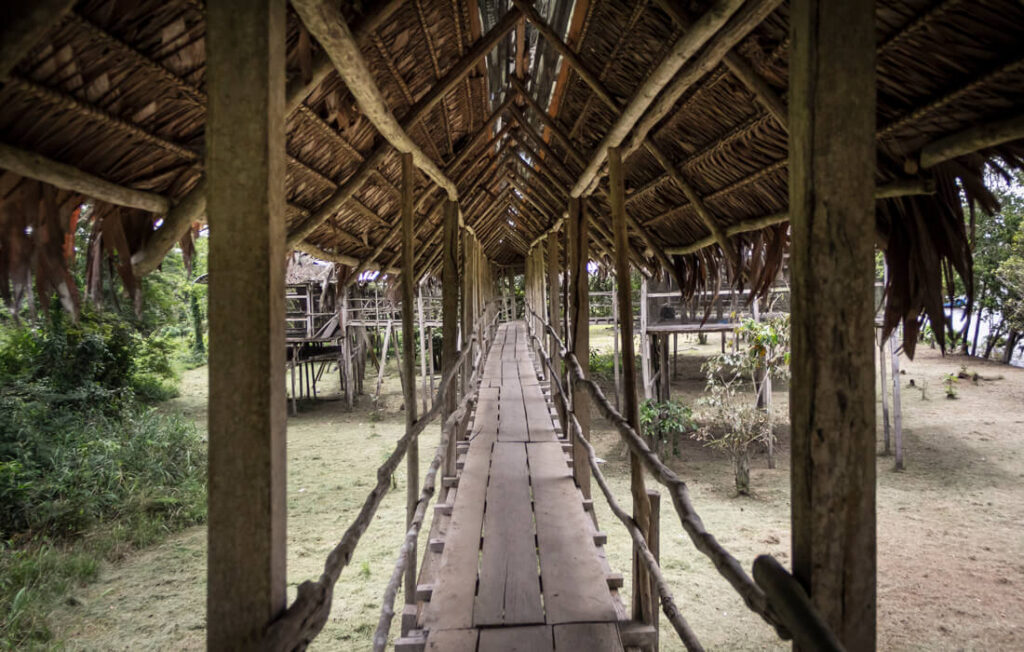
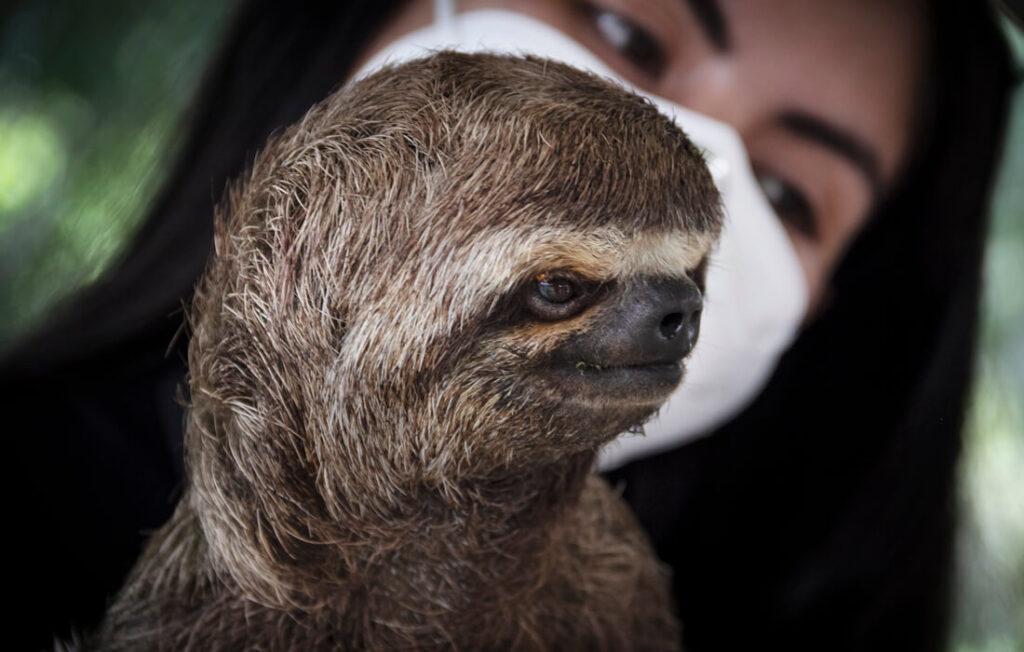
Usually, in rescue centers, visitors get to know more about the animals that have been rescued. How they were rescued, what is their story, or maybe even their name? The question is, can captive animals be returned to the wild? And is it right to even touch them? The truth is that animals are getting habituated to human contact, lacking a natural fear of humans, and might not be able to integrate with a wild population. But releasing animals into the wild is not automatically the best solution. In some cases, it’s really hard, for example when the animal has been traumatized or was very young when captured.
But we don’t know any of this about sloths from Serpentario “Javier” Rescue Centre. We don’t know their names, or how they’ve gotten here. What we know is that we can take photos with them.
After the whole group carried the animal we were all moved to the next cage with parrots. Fortunately, the man is not opening the cage and we just continue to see the small alligators and an ancient turtle. Tourists don’t hesitate and grab the alligator and turtle to take as many pictures as they can. And no one is rushing them. The guide is watching them in silence as they pass the animals from hand to hand enjoying the moment.

We are passing by another cage with capybaras, and some monkeys, and walk toward probably the biggest highlight – an anaconda. The man is opening a cage and we see a snake looking out of the cage to the jungle. He is grabbing the snake and passes him one by one on the shoulders of excited teenagers laughing around.
Reminding people not to forget to wear the masks we are leaving the cage earlier and walking toward the last part. The small monkeys, turtles, and some birds are in small empty cages. Frustrated, we are about to leave, but the guide is stopping us and asking for a tip. We are refusing and approached back to the entrance.
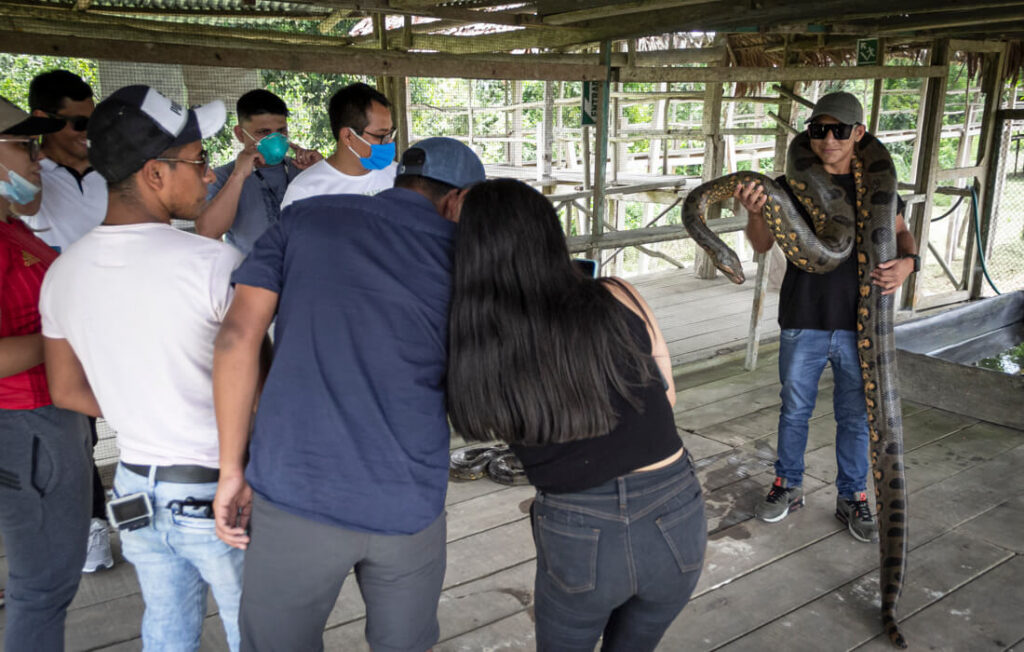
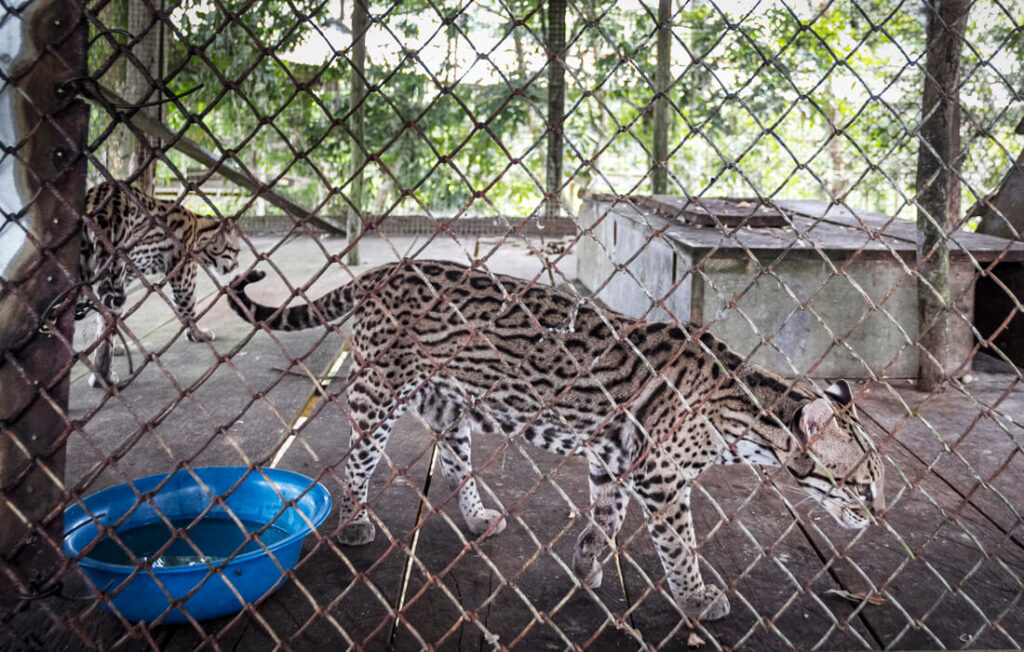
Rescue centers like Serpentario “Javier” Rescue Centre in Iquitos are probably countless. People in the jungle have a different mentality and trying to change it could be really challenging. But this decision has been taken by the Amazon Rescue Center through its environmental education program. Thousands of children and teenagers are given the chance to learn how to protect nature. While their parents were growing up with belief that the jungle is an infinite source of food, their descendants are learning about the sustainable use of natural resources.

